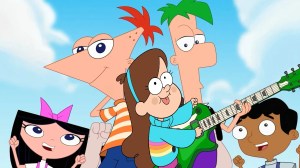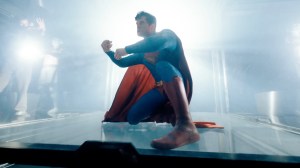Star Trek: Picard is continuing to expland the vision of the Star Trek universe in the modern age, alongside its sister series, Star Trek: Discovery. However, while Discovery re-examines Star Trek‘s past (and future) from a new angle, Star Trek: Picard has taken on the much more difficult task of revisiting one of the most beloved characters (Jean-Luc Picard) and series in the franchise (Star Trek: The Next Generation) from a modern vantage point. As such, Star Trek: Picard is a mashup of the old and new, which has been a very problematic mix for some fans.
Videos by ComicBook.com
Star Trek: Picard showrunner Michael Chabon took to social media earlier this month for a Q&A session with Star Trek fans, during which he was confronted with one of the biggest questions hanging over the show: why is there so much of our contemporary technology featured in Star Trek: Picard?
The reason why certain objects that appear in Star Trek: Picard still look the same in the 24th century as they do in the 21st? According to Michael Chabon, it’s due to the reality that not every branch of technology evolves that greatly from where it began:
“We actually thought about this a lot. When you are making a show that’s set in the future, you have to ask yourself constantly how people will be meeting daily needs and performing everyday tasks. One guiding principle is that some fundamental objects and tools evolve an ideal form – efficient, economic, comfortable, durable, practical, effective, useful – and afterward change very little, except as subject to fashion – which itself is also retrospective. Certainly any human civilization in which all the objects and appurtenances of everyday life were brand new, of recent invention, and thoroughly contemporary in design, would be fairly unprecedented.”
If you’re not a major sci-fi geek and need translation: Chabon is basically saying here that is that technology evolves as needed for improvement (in terms of efficiency and comfort), but that once an optimum form is found, the technology doesn’t necessarily change that fundamentally across time.
A great real-world example would be the telephone: it’s obvious just how far the capabilities of a phone have come since it was first patented by Alexander Graham Bell in 1876; and yet, at the end of the day, a phone is still a telecommunication device where the listening end goes on your ear, and the talking part down by your mouth, in order to carry on a conversation. So while the phone has evolved over time to offer better efficiency and comfort to users, it’s fundamentally the same piece of tech it always was. And the era where smartphones are all the rage has inevitably also spawned a “Retro phone” movement where older designs are once again coveted collector’s items.
So, while it may be easy to criticize Star Trek: Picard as being lazy on the sci-fi front, it seems that Chabon and Co. actually have a lot of Vulcan-tight logic behind their aesthetic choices. And since Picard is (as stated) about the meeting of old and new, it also makes sense, thematically.
Star Trek: Picard is now streaming on CBS All Access. New episodes are released every Thursday.
NOTE: Comicbook.com is owned by ViacomCBS.









